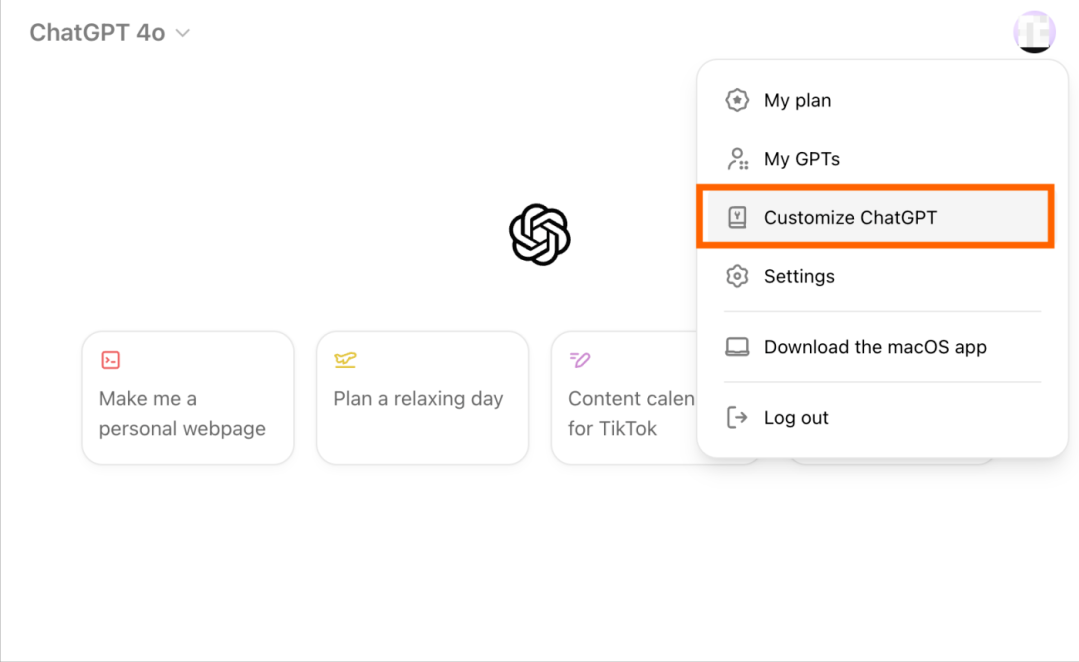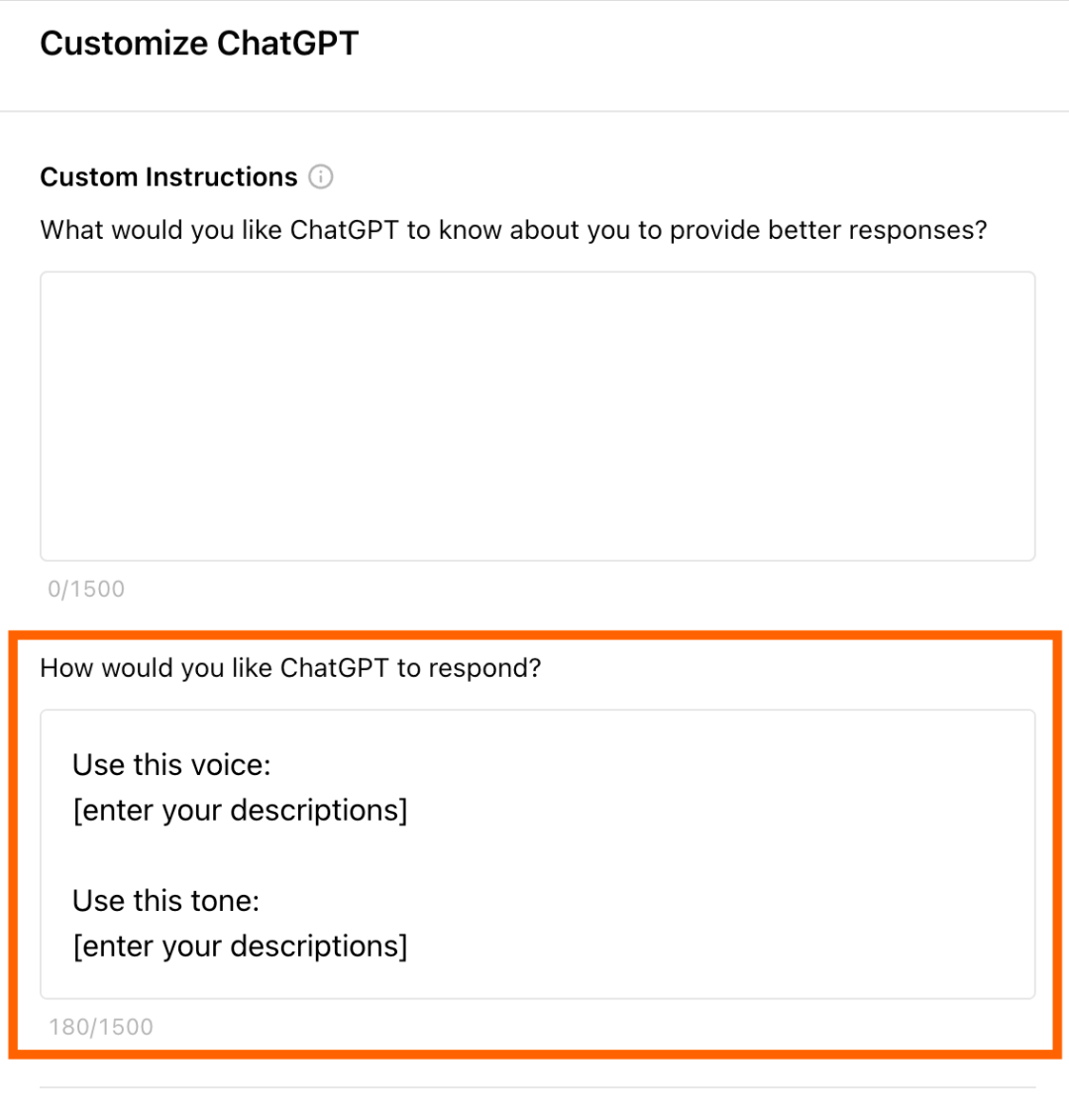When I first came into contact ChatGPT When I first started using optimization tips, I wasn’t sure if it would be effective in improving my writing efficiency. However, my view on it began to change after I learned how to write optimization tips.
Later, OpenAI launched the functions of custom instructions and custom GPT, which greatly improved my writing efficiency.
Both custom commands and GPT allow you to programmatically control ChatGPT's writing style to suit your style, as long as you know what your writing style is. Below you will learn how to determine your own writing style, which will help you train ChatGPT to learn to be likeCopywriterSame writing.

Four key elements of writing style
Broadly speaking, your writing style is made up of four key elements:
Intonation:This is the "voice" that comes across in your writing. For example, if you use a lot of colloquial language, your tone might be casual or spoken.
Tone:Refers to the attitude you express toward the subject or audience in your writing. If you often use humor and non-serious metaphors, you may appear to be more humorous.
style:This includes voice and tone, but also your specific choices of language and sentence structure. For example, you might choose a minimalist approach to writing, conveying your message in as few words as possible.
structure:It’s not just the beginning, middle, and end of your essay, but how you organize everything from the order of your words to the flow of your paragraphs. For example, your writing might always follow the order in which events occurred (linear structure), or it might sometimes recall past events or foreshadow future plots in your narrative (non-linear structure).
How to use ChatGPT to find your own writing style
Before you can train ChatGPT to understand your writing style, you need to be able to describe your own writing style. Interestingly, ChatGPT can help you determine your writing style. Here’s how.
1. Collect the content styles you like. Find 3-5 articles that best reflect your writing style and personality, or the writing style and personality that you hope ChatGPT can learn and imitate. Finally, organize them into an electronic version and provide it to ChatGPT.
2. Ask ChatGPT to analyze your writing. Send your article to ChatGPT and let it analyze your writing style.
Here are some tips you can use:
[Paste your content] Analyze the writing tone, intonation, and structure of the above article.
3. Repeat. If ChatGPT analyzes only one piece of content at a time, repeat the above steps for each article you selected.
Once ChatGPT has analyzed all of your posts, review the results and note any recurring features or patterns.
If certain descriptors come up frequently and resonate with you, jot them down in your go-to note-taking app. If not, ignore them.
Now you can add custom commands to ChatGPT.
How to train ChatGPT using custom instructions likeCopywriterWriting like a master
Custom instructions allow you to add context and requirements for ChatGPT to take into account when generating replies. For example, you can have it always reply with a formal tone. But there is a downside: you can only upload one set of instructions.
Here’s how to use custom instructions to train ChatGPT to write like a master copywriter.
Note: If you need to switch between multiple writing styles and you have subscribed to ChatGPT Plus or Enterprise, you are better off using Custom ChatGPT.
1. Open ChatGPT and click on your profile picture.
2. Click Customize ChatGPT.

3. Enter your writing style characteristics in the "How would you like ChatGPT to respond?" section. Here is a template you can use to enter your instructions:
- Use this tone: [enter your description]
- Use this tone: [enter your description]
- Use this style: [enter your description]
- Use the following structure: [enter your description]
4. By default, the toggle switch next to Enable New Chat should be on. If not, click the toggle button to enable the custom command.
5. Click Save.

You can also provide ChatGPT with more context in the "What would you like ChatGPT to know about you so it can provide a better response?" section. For example, "I write children's storybooks." Or "I write technical articles for XX brand."
How to use custom GPT to train ChatGPT to write like a master copywriter
Train ChatGPT to write like you do Need to switch between multiple writing styles? If you're on the Plus or Enterprise plan, you can create an unlimited number of GPTs for each set of instructions using natural language.
Instead of copying and pasting text from every resource you want GPT to consider, you can also upload knowledge source files. For example, if you are a freelance writer and your client wants you to follow a different style guide, you can quickly upload these files to your GPT generator and it will take care of the rest.
For detailed instructions on how to do this, please check out the detailed guide on creating a custom GPT: How to create your own custom ChatGPT.
Examples of AI-generated content with and without a clear writing style
If you haven’t introduced your specific writing style to ChatGPT before, you might not know that doing so can save you a ton of valuable time editing those personality-less, robotic first drafts.
Below is an example of ChatGPT’s response when prompted to write a sales email using my specific writing style vs. writing a sales email without using my specific writing style.
The first prompt did not include a description of my writing style, so the response looked like this:

When I added the following directive to my prompt, ChatGPT's responses were more on point and the quality of the content improved significantly.
- Use this tone: Professional yet engaging.
- Use this tone: conversational yet slightly motivational.
- Use this style: Informal.
- Use this structure: briefly state the problem first, then explain the solution.

The difference between the two outputs is obvious.
Test and adjust
Once you’ve decided on your writing style and added custom instructions to ChatGPT, you can start experimenting. Ask it to write the outline for your next article. Or write a killer social media headline for you.
If you find that the output is not what you expected, you may need to adjust your writing style descriptors or try a new prompt. Keep trying and adjusting until you get what you expected.